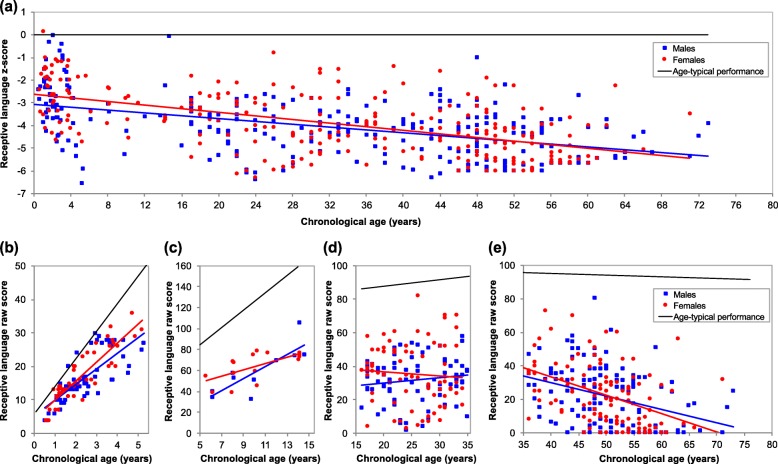Fig. 1.
Changes in receptive language ability across the lifespan in DS. Lines show performance for males (blue) and females (red), with age-typical performance (black). The top graph (a) represents receptive language z-scores across the lifespan (males n = 271, females n = 252), with a value of 0 corresponding to age-typical performance. The bottom graphs (b-e) represent raw scores coresponding to the z-scores in the top graph, split into scores for younger children (b; males n = 59, females n = 45), older children (c; males n = 10, females n = 15), younger adults (d; males n = 80, females n = 77), and older adults (e; males n = 122, females n = 115). Children with DS develop abilities (b and c) but do so at a slower pace than typically developing children, as reflected by a decrease in z-scores over childhood (a). Young adults with DS show a plateau in abilities (d), while in older adults with DS there is a decrease in raw scores (e) likely associated with the development of dementia which results in a further decrease in z-scores (a)

